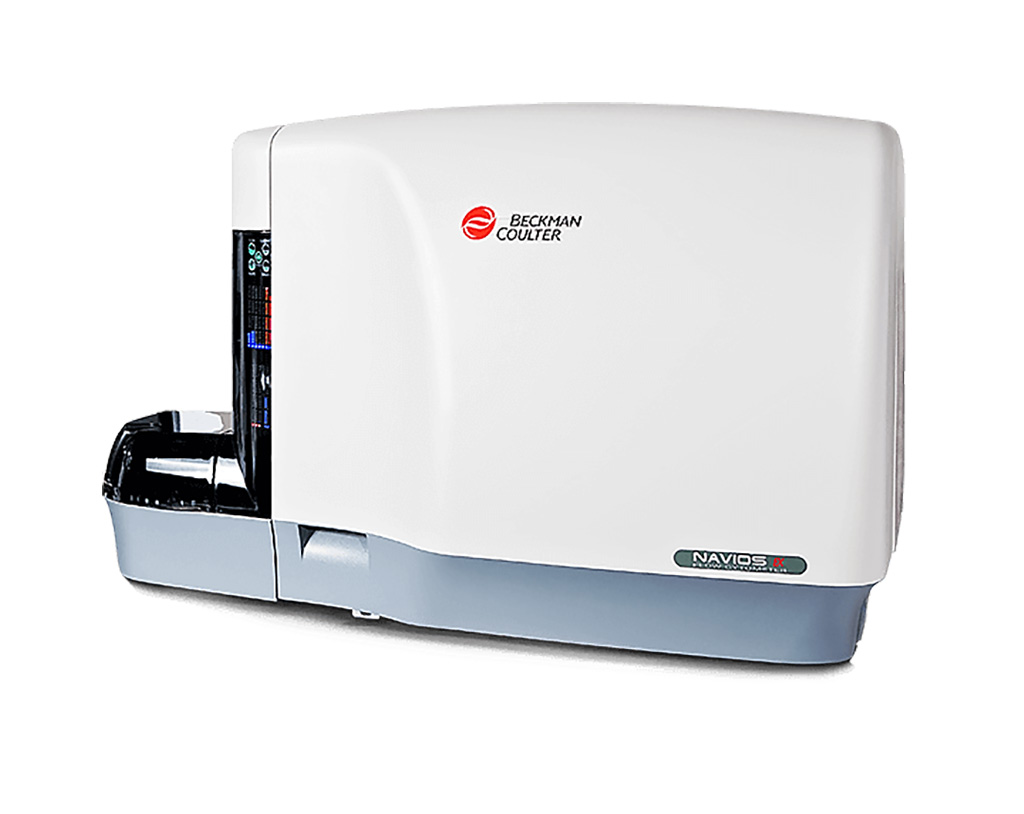Artificial Intelligence Helps Diagnose Leukemia
By LabMedica International staff writers
Posted on 29 Sep 2021
Multi-parameter flow cytometry (MFC) is a cornerstone in clinical decision making for leukemia and lymphoma. MFC data analysis requires manual gating of cell populations, which is time-consuming, subjective, and often limited to a two-dimensional space.Posted on 29 Sep 2021
Typical symptoms of malignant B-cell lymphomas and related leukemias are that the lymph nodes become swollen, there is weight loss and fatigue, as well as fevers and infections. If such a cancer of the lymphatic system is suspected, the physician takes a blood or bone marrow sample and sends it to specialized laboratories for flow cytometry analysis.

Image: The Navios EX flow cytometer offers a solution for advanced cytometry applications with workflows for high throughput laboratories (Photo courtesy of Beckman Coulter)
Clinical Scientists and Bioinformaticians associated with University of Bonn (Bonn, Germany) and colleagues from other institutions present a workflow that allows existing artificial intelligence (AI) to adapt to multiple MFC protocols. They combined transfer learning (TL) with MFC data merging to increase the robustness of AI. The base dataset consists of around 18,000 training samples acquired using a 9-color MFC panel at Munich Leukemia Laboratory (MLL, Munich, Germany), between 2017 and 2018. Four additional MFC target datasets were obtained with different MFC panel compositions. All samples were analyzed on Navios flow cytometers (Beckman Coulter, Miami, FL, USA).
Flow cytometry is a method in which the blood cells flow past measurement sensors at high speed. The properties of the cells can be detected depending on their shape, structure or coloring. Detection and accurate characterization of pathological cells is important when making a diagnosis. The laboratories use "antibodies" that dock to the surface of the cells and are coupled to fluorescent dyes. Such markers can also be used to detect small differences between cancer cells and healthy blood cells. Flow cytometry generates large amounts of data. On average, more than 50,000 cells are measured per sample. These data are then typically analyzed on screen by plotting the expression of the markers used against each other.
The great new feature of the AI presented in the study lies in the possibility of knowledge transfer. Particularly smaller laboratories that cannot afford their own bioinformatics expertise and may also have too few samples to develop their own AI from scratch can benefit from this study. After a short training phase, during which the AI learns the specifics of the new laboratory, it can then draw on knowledge derived from many thousands of data sets.
Peter M. Krawitz, MD, PhD, a Professor at the Institute for Genomic Statistics and Bioinformatics and a senior author of the study, said, “The gold standard is diagnosis by hematologists, which can also take into account results of additional tests. The point of using AI is not to replace physicians, but to make the best use of the information contained in the data.”
The authors concluded their workflow extended deep learning models to multiple MFC panels and achieve high accuracy for multi-label classification across datasets. They addressed some of the previous challenges for automated flow cytometry classification by allowing models to be trained with smaller training sizes and generalizing models to work with multiple MFC panels. The workflow is a step toward making deep learning models robust so that AI for diagnostic MFC can move from the “proof of concept” stage into routine diagnostics. The study was published on September 17, 2021 in the journal Patterns.
Related Links:
University of Bonn
Munich Leukemia Laboratory
Beckman Coulter














